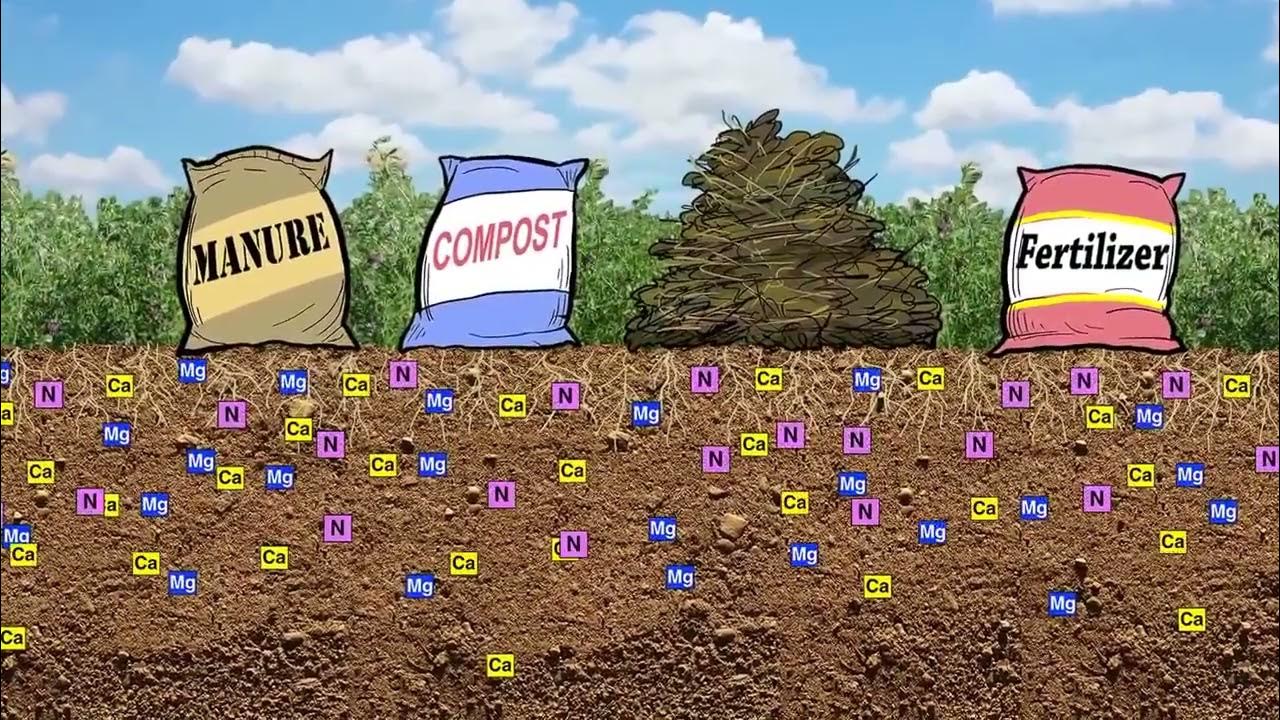Discovery of Photosynthesis
Summary
TLDRThe video explores the historical understanding of plant nourishment, beginning with the ancient Greeks who believed plants absorbed nutrients from soil. In the 17th century, Belgian scientist Jan Baptista van Helmont conducted an experiment, discovering that a willow tree gained weight primarily from water, leading to the realization that plants also require carbon dioxide. English scientist Joseph Priestley further demonstrated that plants produce oxygen when light is present. The video humorously emphasizes the importance of light for photosynthesis, ensuring a lively and engaging exploration of these significant scientific discoveries.
Takeaways
- 🌱 Ancient Greeks believed plants nourished themselves by eating soil.
- 🧪 In the 17th century, Baptista Van Helmont challenged this idea through an experiment.
- ⚖️ Van Helmont planted a willow tree in a pot with 91 kg of dried earth and only watered it for 5 years.
- 🌳 The willow tree gained 75 kg, but the soil's weight changed very little, indicating plants primarily gain mass from water.
- 💧 While water is essential, carbon dioxide is also necessary for plant growth, as discovered later.
- 🐭 Joseph Priestley conducted an experiment with a mouse in a sealed jar to demonstrate plants produce oxygen.
- 💡 Priestley's experiment showed that plants can sustain life by producing oxygen when light is present.
- 🌙 Plants do not produce oxygen in the dark, highlighting the importance of light for photosynthesis.
- 🔍 Jan Ingenhousz confirmed that plants only generate oxygen in light, furthering our understanding of photosynthesis.
- 🎥 The video reassures viewers that no animals were harmed during the filming of these experiments.
Q & A
What did the ancient Greeks believe about how plants obtained nourishment?
-The ancient Greeks thought that plants got their nourishment from eating soil.
Who challenged the ancient Greek belief about plant nourishment, and how?
-Jan Baptista Van Helmont challenged this belief in the 17th century by conducting an experiment where he planted a willow tree in a pot with dried earth and watered it for five years.
What were the results of Van Helmont's experiment?
-After five years, the willow tree gained 75 kg in weight, while the weight of the soil hardly changed, suggesting that the tree's mass came from water.
What did Van Helmont conclude from his experiment?
-He concluded that the tree's growth was due to water, as he noted that 75 kg of wood, bark, and roots arose from it.
What important nutrient did Swiss scientist Jean Senebier later identify as necessary for plant growth?
-Jean Senebier discovered that plants also need carbon dioxide for their growth.
What was Joseph Priestley's experiment in 1780, and what did it demonstrate?
-Joseph Priestley placed a mouse in a sealed jar, which died. However, when he added a plant, the mouse survived, demonstrating that plants produce oxygen.
What limitation did Priestley's demonstration have?
-Priestley's demonstration only worked in the presence of light; plants do not produce oxygen in the dark.
Who discovered that plants only produce oxygen when there's light?
-Dutch scientist Jan Ingenhousz made this discovery.
How does the transcript ensure the audience about animal welfare during these experiments?
-The transcript humorously notes that no animals were harmed in the making of the film.
What is the overall significance of the discoveries mentioned in the transcript regarding plant biology?
-These discoveries highlight the importance of water, carbon dioxide, and light in the process of photosynthesis, enhancing our understanding of plant biology.
Outlines

This section is available to paid users only. Please upgrade to access this part.
Upgrade NowMindmap

This section is available to paid users only. Please upgrade to access this part.
Upgrade NowKeywords

This section is available to paid users only. Please upgrade to access this part.
Upgrade NowHighlights

This section is available to paid users only. Please upgrade to access this part.
Upgrade NowTranscripts

This section is available to paid users only. Please upgrade to access this part.
Upgrade NowBrowse More Related Video

PROSES PENYERAPAN UNSUR HARA OLEH AKAR TANAMAN || Unsur Hara Makro dan Mikro | Nutrisi Tanaman

The Rhizosphere: an interaction between plant roots and soil biology

March: Soils Support Agriculture

Apa Perbedaan Pupuk Organik Dengan Anorganik?

Series 22 - Practical Nutrient Management lI - Nutrient Uptake

NUTRITION IN PLANTS CLASS-7
5.0 / 5 (0 votes)